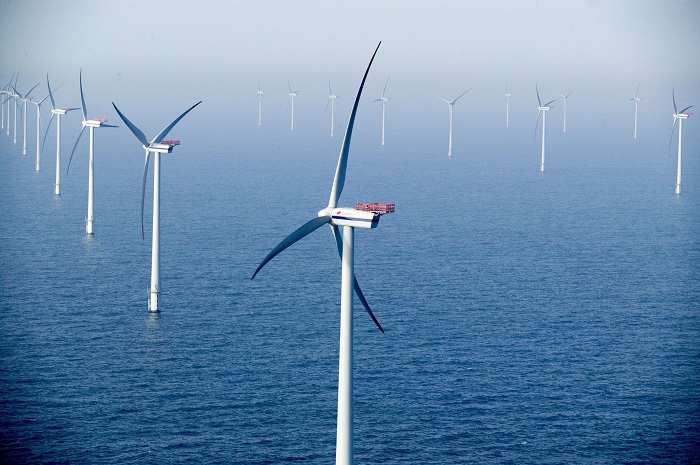

Researchers from Spain’s Universitat Politècnica de Catalunya (UPC) have designed and patented a floating platform for offshore wind turbines that they claim significantly reduces the cost of offshore installations.
Researchers Climent Molins and Alexis Campos, of UPC’s Department of Civil and Environmental Engineering, say the design can reduce energy costs to 12 euro cents per kilowatt hour (kWh) through a more efficient design and cheaper building materials.
The prototype, WindCrete, is a cylindrical structure with a large float and a ballast base that makes it self-stabilising. According to the researchers, the main innovations of the model compared to similar ones on the market are the seamless, monolithic structure and the use of concrete for its construction.
By using concrete instead of the more expensive steel that has been used previously, the construction cost is reduced by 60%. In addition, concrete is more resistant in the marine environment, so the structure has fewer maintenance requirements and a life of about 50 years. The absence of joints in the platform increases its durability against the effects of wind and sea and avoids the damage that normally appears in transition areas.
The WindCrete includes a five-megawatt (MW) wind turbine that can carry rotors of up to 15 MW with a minimum increase in the cost, making it far more economical, claim the researchers. Given the long useful life of this prototype, the possibility of replacing the turbine with a more powerful and more profitable one has also been considered in the design.
WindCrete requires a minimum water depth of 90 m. However, there is no technical maximum depth at which they can be installed. In the Gulf of Mexico, for example, there are oil platforms of this type anchored at depths of up to 2,300 m.
In order to check the behaviour of the platform and its anchoring system in an environment that simulates the sea, trials were also carried out in a wave flume using a WindCrete prototype with a scale of 1:100.
The prototype was developed within the framework of the European project Alternative floating offshore substructure for offshore wind farms (AFOSP).
More news
- N2 rehabilitation project to be completed end of this year
- Siemens to build two gas-powered electricity plants in Libya
- International team unveil 76,000 m2 waterside development in Abu Dhabi
- Gift of the Givers to unveil aquifer project in drought-stricken Beaufort West
- Kenya: one million low cost houses to be constructed over the next five years





